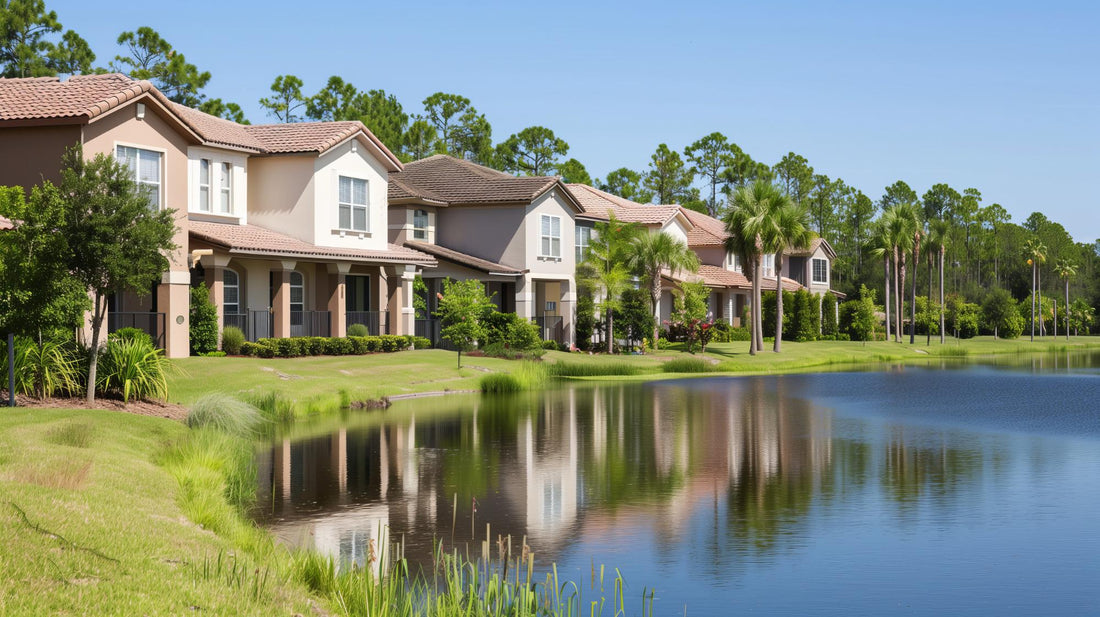Maintaining a vibrant lakeshore landscape is crucial for any waterfront property owner, which is why understanding the nuances of a lakeshore irrigation system is essential. Managing the necessary irrigation tasks can seem daunting at first, but with the right knowledge and tools, it becomes a seamless part of property upkeep. Here, we aim to demystify the process and provide you with the detailed insights you need to ensure your waterfront is as flourishing and stunning as it deserves to be.
First, let's break down the basics of lakeshore irrigation systems. Incorporating a complete irrigation setup involves more than just laying down a few pipes and sprinkler heads. It requires precise planning and consideration of your property's specific geographic and environmental characteristics. From water source quality to matching the right pump type with the terrain of your property, each element plays a pivotal role in creating an effective and efficient watering system.
Furthermore, understanding the key components that make up your irrigation system can save time, cost, and effort in the long run. From filters and pumps to controllers and sprinkler heads, each component must be chosen with care to ensure they work in harmony to maintain your landscape's health and aesthetic. With these foundational points in place, setting up and maintaining your system will be an achievable task, ensuring long-lasting performance and visual appeal. We're here to guide you through each step, ensuring you have all the knowledge at your fingertips to manage your lakeshore with confidence.
Understanding the Basics of Lakeshore Irrigation Systems
Irrigation systems for lakeshore properties differ significantly from those used in typical residential settings due to their unique environmental and geographical challenges. It's crucial that we start with a fundamental understanding of what makes these systems distinctive. Lakeshore irrigation often relies heavily on water drawn directly from the lake, requiring equipment and strategies capable of handling this specific intake condition. We need to consider the sediment level in the lake water, which can affect the functioning of the irrigation system significantly. Additionally, the fluctuating water levels and proximity to a natural body of water demand a more robust system design to avoid contamination and ensure efficient water usage.
Another key aspect is the potential environmental impact of the system. Our systems are designed to minimize disruption to the local ecosystem, using filters and careful placement of intake structures to protect aquatic life and maintain water quality. By understanding these basic principles, we can assure that our irrigation solutions are not only effective but also sustainable and environmentally conscious.
Key Components of a Complete Irrigation System for Lakefront Properties
Every effective irrigation system for a lakeshore property is built on a foundation of essential components that work together to ensure optimal performance. Here are some of the critical parts we consider in every setup:
- Pumps: Since lake water is often used, the pump must be powerful enough to draw water efficiently but gentle enough to not disturb the aquatic environment. Submersible and centrifugal pumps are common choices, each suited for different types of lakefront scenarios.
- Filters: To handle the impurities commonly found in lake water, robust filtration systems are necessary. These prevent clogging and damage to the irrigation components downstream.
- Sprinkler Heads: Chosen based on the specific watering needs of the landscape, these can vary in size, range, and spray pattern. We select heads that provide adequate coverage while conserving water.
- Controllers and Sensors: Smart irrigation technologies enable us to customize watering schedules based on real-time weather conditions and soil moisture levels, enhancing water efficiency and protecting the landscape from over or under-watering.
- Pipes and Valves: These are structured to withstand the specific pressures of the water source and landscape layout, ensuring long-term reliability and ease of maintenance.
Together, these components form the backbone of our irrigation systems, crafted to meet the unique demands of lakeshore property maintenance while promoting water conservation and ecosystem health.
Step-by-Step Guide to Setting Up Your Lakeshore Irrigation System
Setting up an irrigation system for your lakeshore property requires careful planning and execution to ensure both efficiency and longevity. We begin by evaluating the property layout, identifying key areas such as gardens, lawns, and natural plants. We also consider the terrain and elevation changes, which play a significant role in how the system will be designed. Once the planning stage is complete, the installation can commence. We start by installing the main water lines, laying them deep enough to prevent freezing during colder months. Each sprinkler head is strategically placed to optimize water distribution and minimize waste.
Next, the pump installation takes place, taking into account the type of pump selected during the planning phase. If a submersible pump is used, it's carefully placed to ensure that it remains fully submerged, drawing water efficiently without disrupting the aquatic ecosystem. The final steps include connecting all electrical components, like timers and controllers, and conducting a rigorous testing phase to ensure everything operates as expected. By following these meticulous installation steps, we provide a high-performance irrigation system tailored precisely to your lakeshore property’s needs.
Top Tips for Maintaining Your Lakeshore Irrigation System
Regular maintenance of your lakeshore irrigation system is essential for its efficiency and longevity, preventing costly repairs or replacements. First and foremost, inspect your system at the start and end of each irrigation season. Look for any signs of leakages, wear-and-tear, or blockages which can affect performance. Replace any damaged or worn-out parts immediately to maintain optimal functionality.
Secondly, cleaning the filters and checking the pump’s operation are crucial. Filters should be cleaned or replaced regularly to prevent clogging from lake sediments and debris. For the pump and other mechanical parts, a professional check-up at least once a year is recommended to ensure they are functioning correctly. These simple, proactive steps help preserve your irrigation system and maintain the health and beauty of your lakefront landscape.
Conclusion
Caring for your lakeshore property's landscape through an effective irrigation system not only enhances your property's aesthetics but also contributes to the local ecosystem by conserving water and reducing run-off. At BeachGroomer, we understand the complexities involved in managing lakeshore properties. Our expert team is dedicated to designing and maintaining systems that are not only efficient but also ecologically responsible. By incorporating everything from the strategic placement of sprinkler heads to the meticulous selection of efficient pumps, we ensure that every aspect of your irrigation system works harmoniously with your landscape and local environment.
If you’re looking to install a new system or upgrade your existing one, trust us at BeachGroomer to provide you with outstanding solutions tailored to your specific needs. Take the first step towards transforming your property into a lush, vibrant lakeside oasis. Contact us today and let us help you craft the perfect lake irrigation system.
